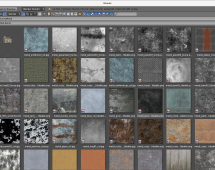
Here is a quick report/summary of work and discussions about Data-block handling, Assets management and Pipeline, that happened at the Blender Institute during my four days stay in Amsterdam, in September 2016.
Reconfirmed Principles
Maybe the most important point is the clear separation between low-level tools and APIs to allow data-blocks and assets management, and the high-level and complex setup that is a production pipeline. Blender itself should not enforce any type of pipeline or asset management, it must only provide tools to make them possible. The “Asset Engine” idea springs from this principle, quite similar to the “render engine” system used integrate external renderers into Blender.
The second point is that we want to keep the linking system already existing in Blender as basis for the new features, this ensures us both a degree of backward and forward compatibility, and excellent performances. However, this implies we keep the .blend file format at the core of the system.
Current Status
Past year has been mostly spent on fixing and enhancing how Blender handles its data-blocks. Most of this work as been merged in master now, and is part of 2.78 release.
The asset engine system/API is also mostly finalized, and has two testing/demo engines now:
- Amber, designed as a simple local asset repository (asset meta-data being stored in a JSON file along with library .blend files).
- Claude, mimicking the Cloud Add-on, to allow browsing and importing textures from the Blender Cloud on-line repository.
Roadmap and TODO’s
Main goal in coming months is to finalize Asset Engine API, and as a side track smaller goal, enhance our ‘pose library’ feature.
Asset Engine API is now for the most part well defined, and (limited) tests have proved it to be working so far. What remains to do here is mostly implement last bits of it, and a lot of UI/UX design and code work (currently it does not expose much more than basic linking to users, access to things like variants and revisions are not yet possible e.g.).
The Sub-Data Issue
One big topic that is still somewhat open is how to handle non-data-blocks data (good example: texture image files). So far, asset-engine branch handles them by:
- Defining a ‘virtual library’ data-block (one per asset engine repository).
- When loading image file, it creates a ‘faked’ linked Image data-block, using relevant virtual library.
This is how things should work in a more generic way, but it poses a problem: linked data-blocks cannot be edited at all, which, in case of image files e.g., means you cannot edit any setting of the Image data-block, and have to go with the default values.
Current asset-engine branch works around this with a hack – it detects those faked-linked data-blocks and allows their edition. Further more, it also fully saves them in .blend file (instead of only saving a ‘reference’ as usually done for linked data).
However, this is not an acceptable solution for final code, here we’ll need the ‘override’ feature, which would allow us to define a purely linked Image data-block (still using the virtual library), and then add a local overriding Image data-block that would allow edition of everything but the image file path.
Pose Library Enhancement
As a smaller, more close-goal project, we want to enhance Pose Library system in Blender, with both some general UI/UX improvement, and by adding a preview system for each pose.
This can also be used as some occasion to investigate and experiment things that should be used more widely in final Asset Management feature (that is, easy and friendly access to data, with icons, drag’n’drop, etc.).
More detailed plan can be found about this project on Sybren’s page.
